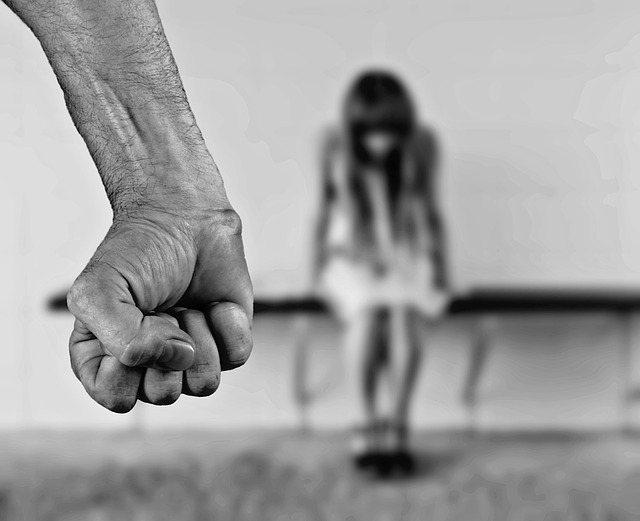Domestic violence is a devastating and isolating experience. Often, it can feel like your alone or that there’s no way out. This is not the case, though. In fact, an estimated 10 million people are affected by domestic violence each year. While shocking, there are many resources for victims to safely leave their current environment and recover, physically and emotionally, from violence. Continue reading to learn about seven resources for domestic violence victims that medical professionals, lawyers, and mental health experts recommend.
- Call the Domestic Violence Hotline
- Visit the ASISTA Website
- Heal Your Grief With Therapy
- Download a Danger Notification App
- Find Resources From the CDC
- Know Your Local Child Abuse Hotline
- Start Medication in Case of HIV Exposure

Call the Domestic Violence Hotline
Leaving an abusive relationship is a highly personal, individual decision. It is important to know that you are supported and that there are people out there who you can trust. If you ever need someone to talk to, the Domestic Violence Hotline is available 24/7 and is free and confidential. If you are ready to press charges and/or pursue a civil protection order, lawyers like myself are here to advocate and fight for you every step of the way.
Michelle Will, Will & Will
Visit the ASISTA Website
A good place for resources that I’d recommend victims of domestic violence visit is ASISTA. While these resources are mostly directed towards immigrants, there are a number of articles that talk about safety planning for victims and their families, solutions to domestic violence, and seeking professional help or taking legal action. This type of information can be extremely important for educating people on the situation they may be facing and could very well be a matter of life or death.
Peter Horne, Geoff McDonald and Associates
Heal Your Grief With Therapy
Anyone who has experienced domestic violence is left with a mountain of conflicting feelings that continue, whether you’ve left the abusive relationship or not. What you may not realize is that these feelings are stuffed in on top of a pressure-cooker-full of leftover conflicting feelings from all the losses and change you experienced before you experienced domestic violence. Conflicting feelings are a symptom of grief, and any grief that remains unresolved is cumulative and cumulatively negative. So, the best way to clear the path for better self-care in your present and future is to make sure you’ve “cleaned up” all the grief you carry around you’re your past. Without healing your broken heart and offloading the emotional baggage you’ve carried for years (as well as the grief you’ve recently experienced), you’ll never be able to maintain the mental, emotional and physical energy you need to maintain proper self-care going forward.
Jinnie Lee Schmid, Grief Recovery Method
Download a Danger Notification App
I would recommend that the victim research and install an app on their phone that notifies authorities and family members when they are in danger. Do it even if you think you won’t use it because if you need it, you will not have the time to download it at the moment. Some apps allow you to designate several people along with the local authorities that are immediately notified you are in danger and where you are located. Often you can hit the app, and it looks like a normal app, and you do not have to type anything in the moment. This helps the victim notify the app then put it down so the abuser is not suspicious and there is less of a chance of struggling over the phone.
Kimberly Perlin, MSW, LCSW-C, Psychotherapist
Find Resources From the CDC
The single one best resource for people experiencing Domestic Violence (DV), aka Intimate Partner Violence (IPV), is the CDC (Center for Disease Control) website. It provides information on the identification of DV/IPV, as well as resources that a person can call if they need help. The resource page had many different organizations listed, including specific sites that may provide assistance to marginalized populations, including Latinas/Latinos, people from the LGBTQI community, those with disabilities, etc. The CDC website is updated very frequently so that there is little chance a person would call an old or outdated resource. The CDC website also has evidence-based resources for programs that can help prevent DV/IPV in young people before dating.
Dr. Karen Jubanyik, MD, Yale University School of Medicine
Know Your Local Child Abuse Hotline
As a couples therapist, this is an issue of personal importance to me. When working with Domestic Violence, one resource is their local child abuse hotline. Oftentimes, partners are fearful that if they leave their abusive spouse/partner, that they will be abandoning their kids or that they will be subjecting their kids to more time with their abusive spouse. If your spouse is abusive to or in front of your children (this includes violent acts on you with the children around), it is important that you get that on record. In the event of a custody battle, having a record of your spouse’s violence in an official report can help your case tremendously to secure sole custody.
Kyle Zrenchik, Ph.D., ACS, LMFT, All In Consulting
Start Medication in Case of HIV Exposure
If the violence involves sexual assault, victims need to know they are entitled to PEP. PEP (post-exposure prophylaxis) means taking medicine to prevent HIV after a possible exposure. It is important to take the medication as soon as possible after the event for the medication to be effective.
Lisa Swift Young, Success Strategy Coach and Author
Terkel creates community-driven content featuring expert insights. Sign up at terkel.io to answer questions and get published.




